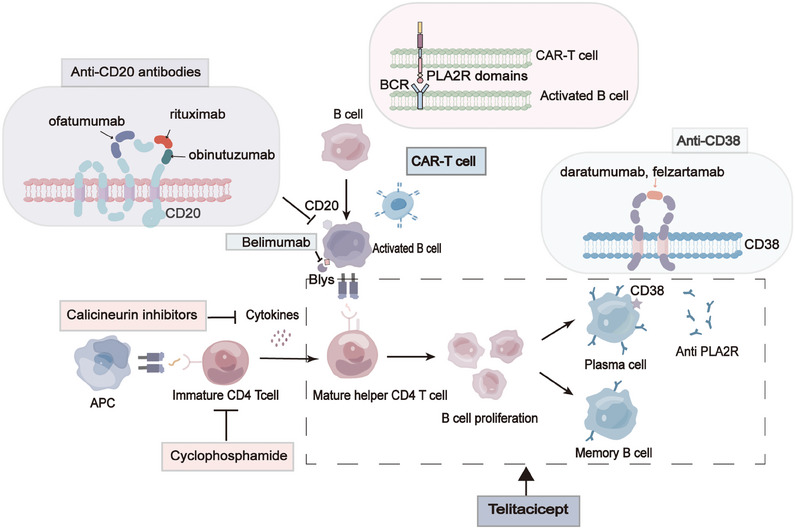FIGURE 6.

Current and future therapies for MN. Therapeutic approaches for membranous nephropathy encompass a repertoire of classical immunosuppressive therapies as well as innovative, targeted treatments. Affinity‐matured B cells undergo a metamorphosis, transitioning into either memory B cells characterized by the CD20 marker or CD20/CD38 plasma cells, which stand as key sources of antibodies and autoantibodies. The impact of cyclophosphamide primarily manifests in hampering the activation and proliferation of T cells and early B cells. On the other hand, calcineurin inhibitors (CNIs) not only impede the differentiation and proliferation of T cells but also elicit a reduction in glomerular PLA2R expression. Moreover, through hemodynamic mechanisms and the stabilization of podocyte structures, CNIs mitigate proteinuria. Anti‐CD20 agents assume responsibility for inducing the demise of CD20+ B cells at pivotal stages, thereby curbing the progression towards advanced B cells and plasma cells while concurrently diminishing autoantibody production. Belimumab, on the other hand, selectively targets B‐cell activating factor (BAFF), consequently leading to the apoptosis of B cells, arresting their transformation into plasma cells, and ultimately reducing autoantibody production. Notably, anti‐CD38 medications place their focus on plasma cells, effectively diminishing the production of autoantibodies, particularly in cases that have relapsed or proven refractory.
